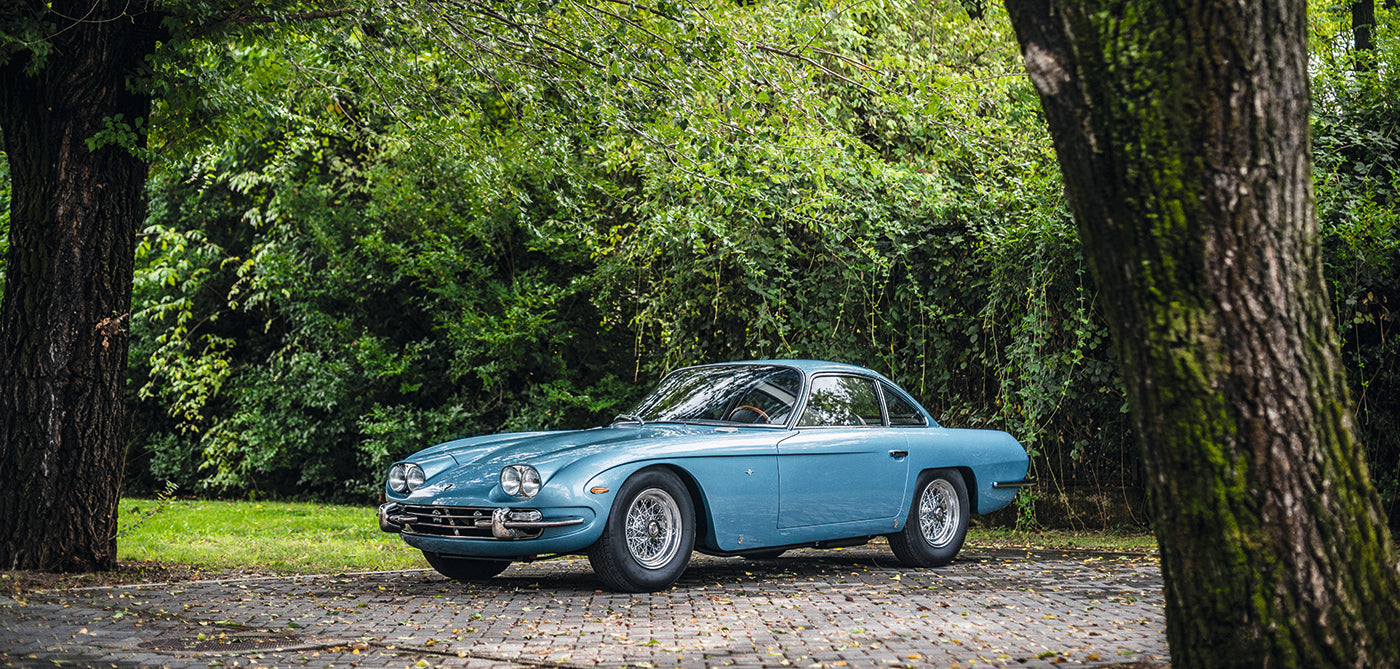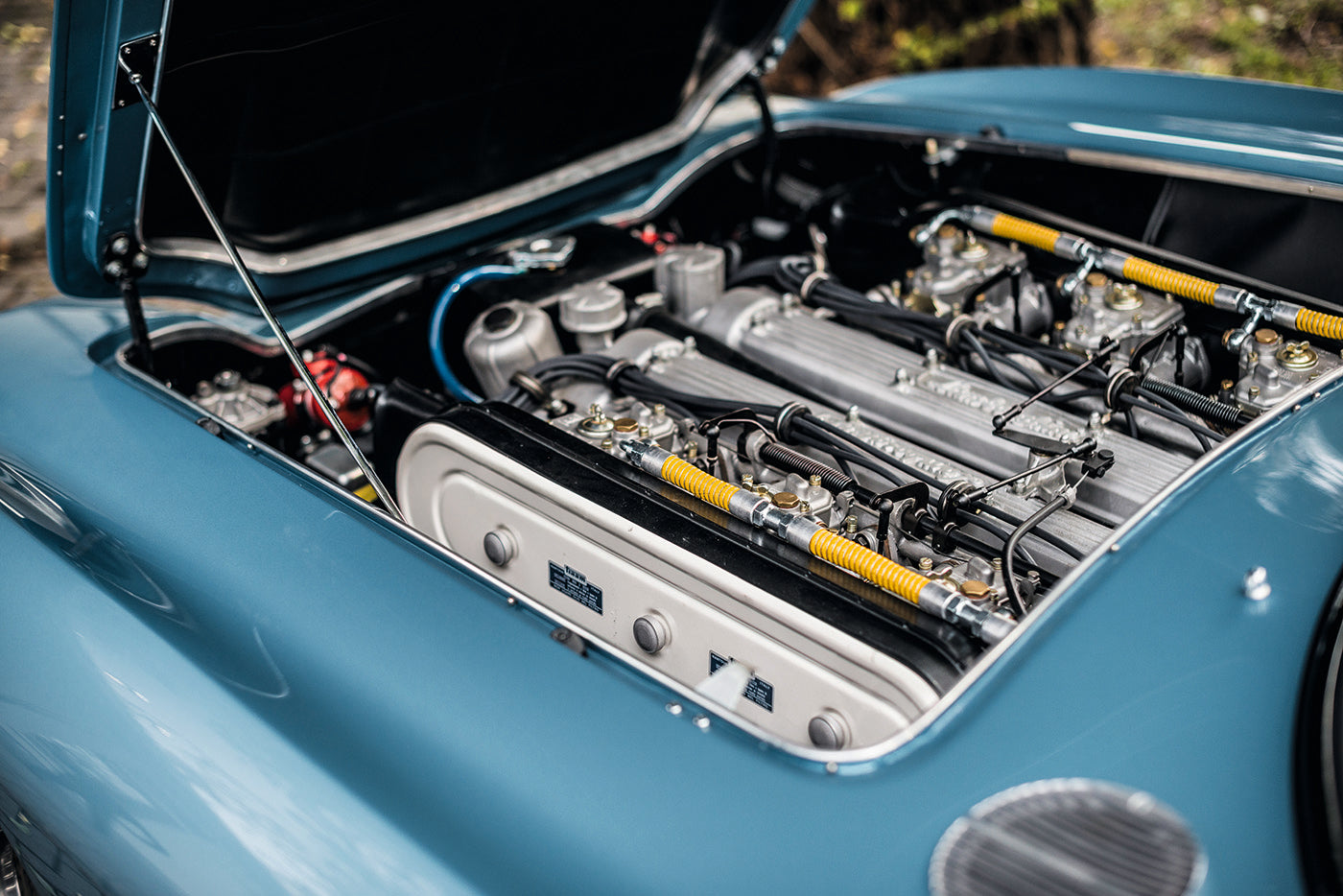
10/2019 Escape
Every legend has a humble beginning. Before the supercars, Lamborghini’s dramatic start began with this gorgeous grand tourer.
How do you make a splash in the realm of luxury grand touring when you’re a mere upstart? It was a question that had boggled every teary-eyed dreamer of the Italian GT dream
Ferruccio Lamborghini was 46 years old when he vowed to beat Ferrari at his own game. The automotive world contains its fair share of rivalries, most of them seemingly revolving around Enzo Ferrari. Possibly for good reason: when he told Lamborghini to stick to building tractors, he unwittingly created one of the automotive world’s great rivalries. Like any good and famous story, it is potentially apocryphal, filled with passion, and repeated with reverence.

Lamborghini, seeking revenge as the story goes, wanted to build the ultimate grand tourer. With a young and talented team behind, he succeeded and created one of the most iconic car companies in the world. (Photo: Rémi Dargegen)
As far as origin stories go, it is one for the ages. Lamborghini would eventually make its mark in terms of eyeball-searing wattage. Right from the start, as a matter of fact, at the Turin Auto Show with the stunning 350 GTV concept. From Ferrari’s affront in 1958 to the unveiling in 1963, Lamborghini had assembled an all-star cast: designed by Giorgio Prevedi, under the supervision of the legendary Franco Scaglione, with a V12 racing engine by Giotto Bizzarrini, and built by Carrozzeria Sargiotto. The GTV was simultaneously elegant and futuristic, resembling little else on the road. The concept led to Lamborghini’s first car, the stunning 350 GT. Which can only mean one thing: if the story is true, then Lamborghini not only took Enzo’s affront personally but sought revenge with seemingly unlimited resources.
He found Carlo Anderloni of Carrozzeria Touring to tone down the design—no more pop-up headlights, no edgier, space-aged rear
How do you make a splash in the realm of luxury grand touring when you’re a mere upstart? It was a question that had boggled every teary-eyed dreamer of the Italian GT dream: from Bizzarrini to ISO to De Tomaso. Even established players like Maserati and Alfa Romeo weren’t guaranteed success. The team Lamborghini assembled was comprised of young blood, nearly half the age of Ferruccio—Gianpaolo Dallara, for example, was just 24 years old when he took over the development of Bizzarrini’s engine, tuning it to nearly 400 horsepower at a massive 11,000 RPM. It was nothing short of a full-fledged racing engine.
Reportedly, Ferruccio had aimed for 350 horsepower from this 3.5-liter V12, going so far as to dock Bizzarrini’s payment by certain lira for every 10 horsepower that his engine couldn’t reach. And yet, it was too much. He wanted a grand tourer, not a race car. This was at odds with what his young and hot-blooded crew sought. Bizzarrini left in a storm, out to work on other strange and fascinating projects. Dallara, engineer Paolo Stanzani, and test driver Bob Wallace set about detuning the engine to something less insane—something that could last at least 40,000 miles between services. What’s more, Ferruccio found Scaglione’s styling too outr., and so he found Carlo Anderloni of Carrozzeria Touring to tone down the design—no more pop-up headlights, no edgier, space-aged rear end but something that could be built with production parts.
“This one will give Ferrari a migraine”
Side-barrel Weber carburetors reduced the hood’s height, which was exactly what Ferruccio sought. With a more tolerable 270 horsepower, the resulting 350 GT could still reach 160 miles per hour. More importantly, it kept most of the concept car’s sleek, long-lined styling, its glassy-topped compartment, and subtle surfacing. The success of this car was vital to the future of the nascent company; fortunately, at the 1964 Geneva Motor Show, the world responded to the production variant in favor.
“This one will give Ferrari a migraine,” said Road & Track in 1965. Good, Ferruccio must have thought. He could now rest easy—if not victorious, then satisfied. Carrozzeria Touring built 120 examples before Lamborghini moved on, upgrading the engine to four liters for the 400 GT. With this upgrade came an increase in power, then producing 320 horsepower, closer to Bizzarrini’s goals, but still nowhere as extreme.

Lamborghini commissioned a V12 by Giotto Bizzarrini. When he made the 400 horsepower race-spec, Lamborghini asked him to tone it down instead. (Photo: Rémi Dargegen)
The 400 GT’s replacement kept the same format but was then named the Islero—beginning a proud tradition of Lamborghini’s obsession with cars named after fighting bulls, swords, or curse words. This time, the car was named after the Miura fighting bull who killed the famed Manolete, once considered the greatest matador in the world, on August 28, 1947. Of course, there was also the Miura.
As for that original 350 GTV concept? It eventually received the powerful race-tuned engine that it deserted, winding up in the hands of a Japanese collector before returning to Lamborghini’s museum in Sant’Agata Bolognese, just down the street from Modena, where the rivalry plays on.
Tour some of the most stylish sports cars of the last 100 years through Beautiful Machines.












